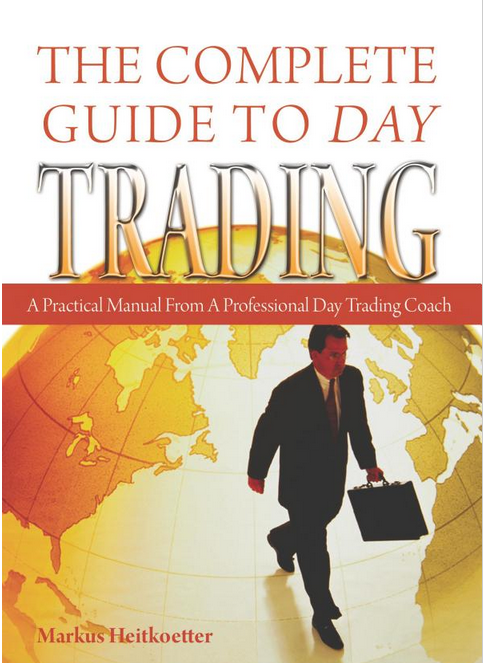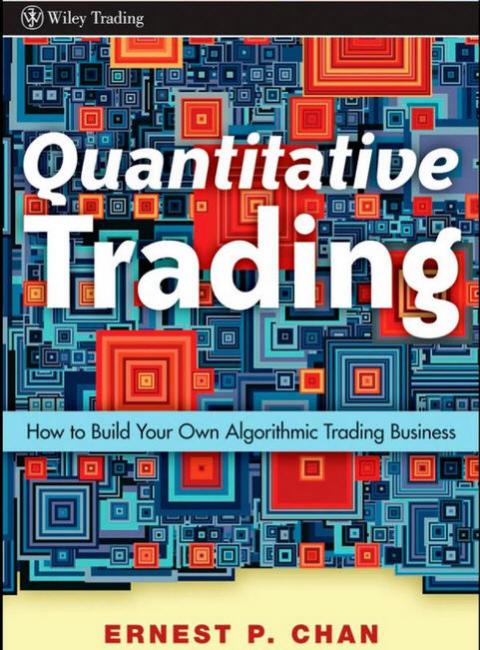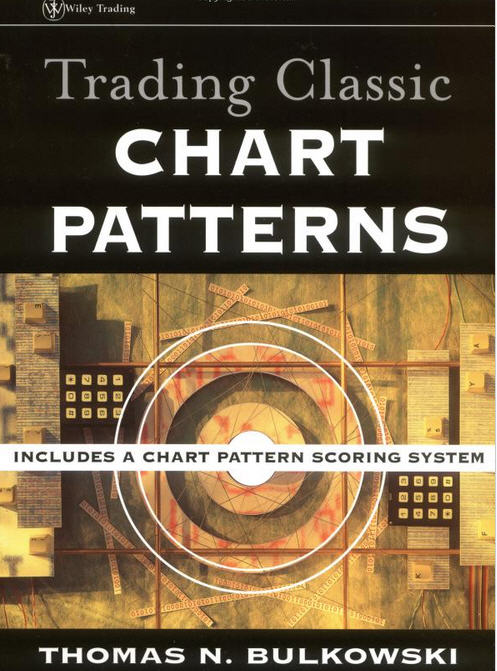Trades About To Happens : A Modern Adaptation Of The Wyckoff Method
While Richard Wyckoff's search to develop a "trained judgment" for
trading began decades ago, his method—which has been modified to account
for changes in market conditions, but remains true to his original
work—continues to draw great interest from traders around the world.
Author David Weis is a trader and market analyst with nearly forty years
of experience in this field. A recognized authority on the trading
methods of Richard Wyckoff, he understands how to utilize the principles
behind Wyckoff's work and make effective trades with them. And now,
with Trades About to Happen, he skillfully reveals how to adapt
Wyckoff's techniques to excel in today's volatile markets.
Engaging and accessible, this reliable resource looks at Wyckoff's
approach from a more modern perspective and shows how you can logically
interpret bar charts and wave charts to find trades about to happen. By
studying the chart examples in this book, you'll gain tremendous insight
into reading what markets are saying about themselves and develop the
ability to locate turning points of different degrees. Page by page,
Weis facilitates your learning by:
- Comparing efforts of buying or selling with the reward—volume versus upward or downward progress
- Considering the meaning of the close within the range of a price bar
- Looking for shortening of upward or downward thrust as well as follow-through, or lack of follow- through, after penetrations of support resistance
- Exploring the interaction of price with trend lines, channels, and support/resistance lines—which often highlight the price/volume story
- Watching for tests of high-volume or "vertical" areas where price accelerates upward or downward
-
And much more
Along the way, Weis introduces the adaptations he has made to Wyckoff's
original tape-reading tools—which are better suited for the enormous
volatility of today's stock and futures markets—and can be applied to
intraday and daily price movement.
When it comes to Wyckoff analysis, it's easy to forget that the world of
chart reading is not black or white, but gray. One has to have an open
mind rather than a fixed, pre-conceived ideal. Trades About to Happen
will help you achieve this goal as you discover how to develop the feel
and intuition of a successful trader and become better equipped at
adapting the Wyckoff method to today's dynamic markets.
Cycle Analytics For Traders : John F Ehlers
Cycles are a unique kind of trading analytics, being one of the few
types of market data that can be accurately measured. But understanding
what the cycles mean and which trades to make based on them is an
extremely complex process. Cycle Analytics for Traders is a technical
resource for self-directed traders that explains the scientific
underpinnings of the filters and indicators used to make effective and
profitable trading decisions. Rather than simply using cycle analytics
on blind faith, this book explores and explains the how and why of
cycles.
Though technical in nature, Cycle Analytics for Traders emphasizes
simplicity rather than mathematical purity, taking a pragmatic
real-world approach to attaining effective trading results. It allows
traders to think of indicators and trading strategies in the frequency
domain as well as their motions in the time domain, letting them select
the most efficient filter lengths for the job at hand. Traders with
little mathematical background will learn how to assess general market
conditions to their advantage while technically astute traders will be
able to create indicators and strategies that automatically adapt to
measured market conditions using the computer code described here.
Additionally, author John Ehlers explains several vital concepts all
traders should understand: how to eliminate or use Spectral Dilation to
their advantage; how to use Automatic Gain Control to normalize
indicator amplitude swings; the fact that all indicators are statistical
rather than absolute; how to use advanced cookbook filters; several
different methods for estimating market spectra and sifting out the
Dominant Cycle; and how to use transforms to improve the display and
interpretation of indicators.
Cycle Analytics for Traders shows traders how to approach trading as a
statistical process that should be judged from the long-term view,
rather than a small sample set of just a few trades—no matter how
profitable those few are. With this practical and informative book as a
guide, any trader can master cycle analytics, letting statistics and
science light the way to long-term trading success.
by Nicolas Darvas and Steve Burns

How did a world-famous dancer with no knowledge of the stock market, or
of finance in general, make 2 million dollars in the stock market in 18
months starting with only $10,000? Darvas is legendary, and with good
reason. In this new edition: How I Made $2,000,000 in the Stock Market:
Now Revised & Updated for the 21st Century Steve Burns uses his
experience to offer explanations as to why the methods are still
reliable. Updating a classic book is a monumental task. The basic
philosophy of the writer cannot be changed. Steve Burns approach this
work with the eye of a master restorer who looks at a classical painting
that is being refurbished. He carefully studied the text to bring
Nicolas Darvas wisdom into the twenty-first century. Steve Burns
illuminate the dramatic changes in the market to show how Nicolas Darvas
principles are more useful now than ever.
The Complete Guide to Day Trading: A Practical Manual From a Professional Day Trading Coach
by Markus Heitkoetter

Do you want to be a day trader? Every day, millions of dollars
change hands in the markets, presenting the perfect opportunity for
people just like you to make significant money and profits through the
art of day trading.
But here's the question: is day trading right for you? And, if it is, how do you get started?
In his new three-part guide, professional day trading coach Markus
Heitkoetter lays out a simple, proven system for trading success. From
the basic essentials of trading to the actual process of making money in
the markets, he'll cover it all.
- What You Need To Get Started: The Tools, The Methods, The Mindset
- Finding the Best Market to Trade: Futures, Forex, Stocks, or Options
- A 7-Step Approach to Developing Your Own Profitable Trading Strategy
- The 10 Power Principles of Successful Trading Strategies
- Avoiding The 7 Common Mistakes of Traders
- Get Started Without Risking A Single Penny
- Ready-To-Use Trading Plan Templates, Checklists, Resource Directories, & More
Loaded with easy-to-use information, proven and reliable strategies and guidelines, and a practical hands-on approach to the industry, The Complete Guide to Day Trading is your own personal manual to success in the markets.
Theory Of Stochastic Processes : With Applications to Financial Mathematics and Risk Theory
This book is a collection of exercises covering all the main topics in
the modern theory of stochastic processes and its applications,
including finance, actuarial mathematics, queuing theory, and risk
theory.
The aim of this book is to provide the reader with the theoretical and
practical material necessary for deeper understanding of the main topics
in the theory of stochastic processes and its related fields.
The book is divided into chapters according to the various topics. Each
chapter contains problems, hints, solutions, as well as a self-contained
theoretical part which gives all the necessary material for solving the
problems. References to the literature are also given.
The exercises have various levels of complexity and vary from simple
ones, useful for students studying basic notions and technique, to very
advanced ones that reveal some important theoretical facts and
constructions.
This book is one of the largest collections of problems in the theory of
stochastic processes and its applications. The problems in this book
can be useful for undergraduate and graduate students, as well as for
specialists in the theory of stochastic processes.
by Alexander Elder

Trading for a Living Successful trading is based on three M's: Mind,
Method, and Money. Trading for a Living helps you master all of those
three areas:
- How to become a cool, calm, and collected trader
- How to profit from reading the behavior of the market crowd
- How to use a computer to find good trades
- How to develop a powerful trading system
- How to find the trades with the best odds of success
- How to find entry and exit points, set stops, and take profits
- there are more buyers than sellers
- buyers are more aggressive than sellers
- sellers are afraid and demand a premium
- more shares or contracts are bought than sold
===========================
Interview with Dr. Alexander Elder: "I want to be a psychiatrist in the market"
MQL5 Cookbook: Developing a Framework for a Trading System Based on the Triple Screen Strategy
Forum on trading, automated trading systems and testing trading strategies
Something Interesting in Financial Video July 2013
newdigital, 2013.07.16 08:14
37. Herd Mentality is the Psychology That Leads to Big Trading LossesA lesson on crowd psychology and how it relates to trading the stock, futures, and forex markets.
The best summary that I have seen on this subject, as well as a great book on trading in general is Dr. Alexander Elder's book Trading for a living. As the Trader and Psychologist points out in his book, people think differently when acting as part of a crowd than they do when acting alone. Dr Elder points out that "People change when they join crowds. They become more credulous, impulsive, anxiously search for a leader, and react to emotions instead of using their intellect."
In his book Dr. Elder gives several examples of academic studies which have been done which show that people have trouble doing simple tasks such as choosing which line is longer than the other when put in a situation with other people who were instructed to give the wrong answer.
Perhaps no where is the strange effect is the psychology of crowds seen than in the financial markets. One of the more recent examples as I have spoken about in my other lessons of the effect that the psychology of crowds can have on the markets is the run-up of the NASDAQ into 2000. As you will find by pulling out the history books however, this is not an isolated incident as financial history is littered with similar price bubbles created and then destroyed in the same way as the NASDAQ bubble was.
So why does history continue to repeat itself? As Dr. Elder points out in his book, from a primitive standpoint chances of survival are often much higher as part of a group than they are alone. Similarly war's are often one by militaries with the strongest leaders. It is thus only natural to think that human's desire to survive would breed a desire to be part of a group with a strong leader into the human psyche.
So how does this relate to trading? Well as we learned in our lessons on Dow Theory, the price is representative of the crowd and the trend is representative of the leader of that crowd. With this in mind think about how difficult it would have been to short the NASDAQ at the high's in 2000, just at the height of the frenzy when everyone else was buying. In hindsight you would have ended up with a very profitable trade but, had the trade not worked out, people would have asked how could you have been so dumb to sell when everyone else knew the market was going up?
Now think about all the people who held on to their positions and lost tons of money after the bubble burst in 2000. As they had lots of company there were probably not a whole lot of people who were laughing at them. Yes they were wrong but how could they have known when so many others were wrong too?
By looking at this same example, you can also see how panic selling often ensues after sharp trends in the market as this is representative to a crowd whose leader has abandoned them.
In order to trade successfully people need a trading plan which is designed before entering a trade and becoming part of the crowd so they can fall back on their plan when the emotions which are associated with being part of a crowd inevitably arise. Successful traders must also realize that there is a time to run with the crowd and a time to leave the crowd, a decision which must be made by a well thought out trading plan designed before entering a trade.
by Thomas R. Demark

From the Foreword by John J. Murphy "DeMark's work as a consultant has
been restricted to large institutions and many of the legendary traders
in the world today. By sharing his creative ideas with us, as well as
his passion for precision and improvement, Tom DeMark's emphasis on the
'new science' of technical analysis helps push the technical frontier
another step forward. With the unprecedented attention now being paid to
technical analysis, this new book couldn't have come at a better time."
-John J. Murphy, bestselling author of Technical Analysis of the
Futures Markets and Intermarket Technical Analysis, and technical
analyst for CNBC
"This book is filled with innovative, creative, and
clever new ideas on technical analysis. Tom DeMark has done a wonderful
job of turning subjective techniques into objective strategies and
tactics."
- Courtney Smith President and CIO Pinnacle Capital
Management, Inc.
"Those who know him and his work call him the
consummate technician--a trading system developer without peer."
- Futures magazine
"DeMark is the ultimate indicator and systems guy. No
one touches him. I know the Holy Grail of trading systems doesn't exist
because if it did, Tom would have found it by now."
- James Bianco
Director of Arbor Trading
"Tom DeMark is a genuine leader who has been
behind-the-scenes until now. Publishing DeMark is a coup."
- Ralph Vince
author of The Mathematics of Money Management
Quantitative Trading: How to Build Your Own Algorithmic Trading Business (Wiley Trading)

While institutional traders continue to implement quantitative (or algorithmic) trading, many independent traders have wondered if they can still challenge powerful industry professionals at their own game? The answer is "yes," and in Quantitative Trading, Dr. Ernest Chan, a respected independent trader and consultant, will show you how. Whether you're an independent "retail" trader looking to start your own quantitative trading business or an individual who aspires to work as a quantitative trader at a major financial institution, this practical guide contains the information you need to succeed.
by Thomas Bulkowski

Use popular chart patterns profitably
In his follow-up to the well-received Encyclopedia of Chart Patterns,
Thomas Bulkowski gives traders a practical game plan to capitalize on
established chart patterns. Written for the novice investor but with
techniques for the professional, Trading Classic Chart Patterns includes
easy-to-use performance tables, vivid case studies, and a scoring
system that makes trading chart patterns simple. This comprehensive
guide skillfully gives investors straightforward solutions to profitably
trading chart patterns. Trading Classic Chart Patterns also serves as a
handy reference guide for favorite chart patterns, including broadening
tops, head-and-shoulders, rectangles, triangles, and double and triple
bottoms. Filled with numerous techniques, strategies, and insights,
Trading Classic Chart Patterns fits perfectly into any pattern trader's
arsenal.
Thomas N. Bulkowski (Keller, TX), an active investor since 1981, is the
author of the highly acclaimed Encyclopedia of Chart Patterns as well as
numerous articles for Technical Analysis of Stocks & Commodities.
Trained as a computer engineer, Bulkowski worked for over a decade at
Tandy Corporation. Prior to that, he worked on the Patriot air defense
system for Raytheon.
New technology and the advent of around the clock trading have opened
the floodgates to both foreign and domestic markets. Traders need the
wisdom of industry veterans and the vision of innovators in today's
volatile financial marketplace. The Wiley Trading series features books
by traders who have survived the market's ever changing temperament and
have prospered-some by reinventing systems, others by getting back to
basics. Whether a novice trader, professional or somewhere in-between,
these books will provide the advice and strategies needed to prosper
today and well into the future.
- Free trading apps
- Over 8,000 signals for copying
- Economic news for exploring financial markets
You agree to website policy and terms of use
This is the thread about books related for stocks, forex, financial market and economics. Please make a post about books with possible cover image, short description and official link to buy (amazon for example).
Posts without books' presentation, without official link to buy and with refferal links will be deleted.Posts with links to unofficial resellers will be deleted